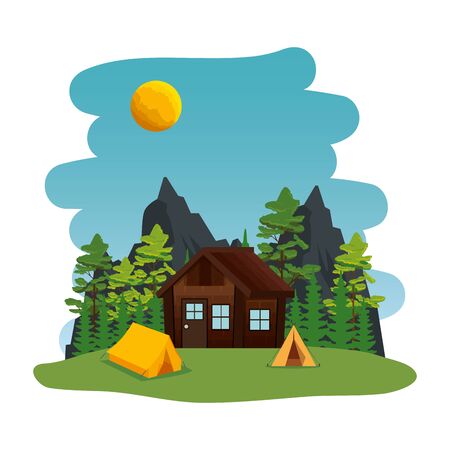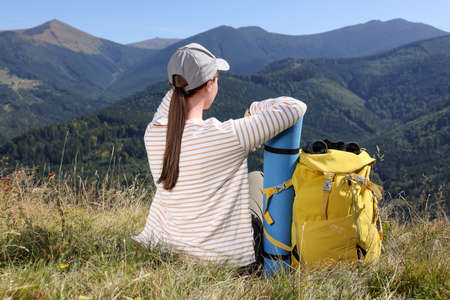1. Understanding Seasonal Wildlife Patterns
In the wilds of America, timing is everything—especially for wildlife. To camp ethically, you first need to understand how animals’ behaviors shift with the seasons and across regions. From the snow-capped Rockies to the humid Southeast, wildlife isn’t static. In spring and early summer, many species enter breeding season; birds build nests, deer fawns are born, and territorial instincts run high. Come fall, migration kicks into gear—think of the iconic V-shaped flights of geese heading south or monarch butterflies drifting toward Mexico. Winter brings hibernation for bears in the West and Northeast, while other creatures like squirrels and beavers double down on food storage. Each region has its own rhythm: elk rutting in the Pacific Northwest, sea turtles nesting on Gulf Coast beaches, or alligators becoming sluggish in Florida’s chillier months. Recognizing these patterns isn’t just for curiosity—it’s essential for minimizing your impact as a camper. When you know what animals are doing—and when—they become less likely to be startled or stressed by your presence. That’s the foundation for responsible outdoor living.
2. The Ethics of Camping Near Wildlife
Understanding the ethics of camping near wildlife starts with recognizing that animals’ behaviors change drastically across the seasons. In spring, many species are nesting or raising young, while fall brings on migration or preparation for hibernation. As responsible campers, it’s crucial to adapt our practices to these natural rhythms to minimize human impact and promote coexistence.
Following Leave No Trace (LNT) principles isn’t just a suggestion—it’s a must if you want to camp ethically in the backcountry. Respecting seasonal animal activity is at the core of these guidelines. For example, setting up camp too close to water sources during dry months can disrupt essential drinking spots for wildlife. In late summer and early fall, bears and other mammals are hyper-focused on finding food before winter, so careless food storage can lead to dangerous encounters.
Here’s a quick breakdown of how seasonal animal activities should influence your camping habits:
| Season | Wildlife Behavior | Ethical Camping Practice |
|---|---|---|
| Spring | Nesting, birthing, raising young | Avoid disturbing nests/dens; keep noise and movement low; stay on marked trails |
| Summer | Foraging, increased animal movement | Store food securely; don’t feed wildlife; pack out all trash |
| Fall | Migrating, pre-hibernation feeding frenzies | Be extra vigilant with food and scented items; respect migration corridors; avoid blocking access to key habitats |
| Winter | Hibernation or seeking shelter/food in limited areas | Avoid disturbing hibernation sites; minimize off-trail travel; respect closed areas for habitat protection |
The bottom line? Ethical camping means paying attention to more than just your own experience. By tuning into what local wildlife is doing—especially during sensitive seasons—you help protect natural habitats and ensure that future generations can enjoy wild spaces, too. Always remember: nature isn’t your backdrop; it’s home for countless creatures relying on your good judgment.

3. Bear Country: Precautions During Active Seasons
When camping in bear country, especially during the spring and fall when bears are most active and foraging, your approach to ethical camping must adapt to seasonal wildlife behavior. Bears emerge from hibernation hungry and driven by the need to build fat reserves, making them more likely to roam near campsites in search of easy food sources. Understanding this seasonal activity is crucial for both your safety and for minimizing human impact on local bear populations.
Seasonal Food Storage Strategies
During active bear seasons, practicing proper food storage isnt just a suggestion—its essential. Use certified bear-resistant canisters or lockboxes where available. Never leave food, trash, toiletries, or scented items unattended or inside your tent. Hang food at least 10 feet off the ground and 4 feet away from tree trunks if canisters aren’t an option. This reduces the chance of attracting bears and teaches them not to associate campsites with easy meals.
Campsite Selection According to Bear Activity
Your choice of campsite plays a major role in reducing wildlife encounters. Avoid setting up camp near berry patches, animal trails, water sources, or signs of recent bear activity such as tracks or scat. Choose open areas with good visibility and keep your cooking and sleeping zones at least 200 feet apart. Always check with local rangers about recent bear sightings before settling down for the night.
Leave No Trace: Respect Seasonal Wildlife Patterns
Ethical campers know that respecting seasonal wildlife patterns is part of the Leave No Trace philosophy. In bear country, this means going beyond picking up after yourself—pack out all trash, minimize odors, and even avoid using heavily scented soaps or lotions. By following these best practices tailored to the season’s unique wildlife behavior, you help ensure a safer outdoor experience for everyone while keeping America’s wild places truly wild.
4. Minimizing Human Impact During Breeding and Nesting Periods
When it comes to ethical camping, understanding and respecting wildlife breeding and nesting periods is crucial. In the U.S., many native species—from birds like bald eagles to mammals such as elk—are especially vulnerable during these seasons. Disturbance from campers can cause adults to abandon nests, expose eggs or young to predators, or even lead to failed reproduction cycles. Responsible outdoor enthusiasts know that minimizing human impact is not just a suggestion; it’s essential for maintaining healthy wildlife populations.
Why Avoid Certain Areas?
During breeding and nesting periods, animals require quiet, secure environments to ensure the survival of their offspring. Entering sensitive zones can cause stress, force parents away from their young, or leave nests exposed. Many national parks and forests in the U.S. post seasonal closures for this reason—these aren’t arbitrary rules but science-backed measures to protect local ecosystems. Following posted guidelines and local advice helps preserve the natural balance.
Common Breeding & Nesting Seasons by Species (U.S.)
| Species | Breeding/Nesting Season | Sensitive Habitats |
|---|---|---|
| Bald Eagle | Jan–Jul | Lakeshores, tall trees near water |
| Elk | Sep–Oct (rut), May–Jun (calving) | Meadows, forest edges |
| Piping Plover | Apr–Aug | Sandy beaches, dunes |
| Sea Turtle | May–Oct | Sandy coastal beaches |
Modifying Activities to Reduce Impact
- Check with local rangers or visitor centers about current closures or sensitive areas before heading out.
- Avoid bushwhacking off-trail in spring and early summer when many ground-nesting birds are active.
- If you spot flagged zones or temporary fencing, give these areas wide berth—they often mark nesting sites.
- Control pets at all times; unleashed dogs can easily disrupt nests and young wildlife.
Cultural Mindset: Respecting Nature’s Calendar
For American campers, adopting a “leave no trace” mindset isn’t just about litter—it means syncing our outdoor adventures with nature’s rhythms. By steering clear of critical habitats during peak breeding seasons and modifying our activities, we actively contribute to conservation efforts. This respectful approach ensures future generations can continue to enjoy thriving wild spaces across the United States.
5. Wildlife Awareness: Identifying Signs and Staying Safe
Recognizing Animal Presence in the Wild
Understanding the subtle signs of wildlife is crucial for any camper committed to ethical outdoor practices. Seasonal changes bring different animals into the open, from bears emerging after hibernation to elk during rutting season. Watch for tracks, scat, fur on tree bark, or disturbed foliage—these clues help you identify which species are active nearby. Bird calls and sudden silences often signal predator activity. By tuning into these natural indicators, you gain a better sense of what’s sharing your campsite and how to act accordingly.
Territorial Behaviors and What They Mean for Campers
Wildlife territoriality intensifies during certain seasons, especially mating or nesting periods. For example, spring may mean protective mother bears or moose with calves, while late summer can bring aggressive deer or elk. Knowing these patterns helps you avoid accidental encroachment. Give wide berths to animal trails, dens, or nest sites. If you notice warning behaviors—like bluff charges from larger mammals or aggressive vocalizations from birds—back away slowly without turning your back. These cues are not just for show; they’re nature’s way of telling you to respect boundaries.
Staying Safe While Coexisting with Wildlife
Safe coexistence starts with preparation and awareness. Always store food in bear-resistant containers or hang it high off the ground, regardless of the season. Cook and clean well away from your sleeping area to reduce scent attraction. When hiking, make noise to alert animals of your presence—most wildlife prefers avoiding humans if given the chance. Travel in groups when possible and keep pets leashed at all times to prevent surprise encounters. Carry bear spray where appropriate and know how to use it.
Quick Tips for Outdoor Survival
- Study local wildlife activity before your trip—seasonal guides from park services are invaluable.
- Leave no trace: pack out all trash and avoid feeding animals, intentionally or unintentionally.
- If you spot fresh signs of large predators (like claw marks or scat), consider changing campsites.
Respect Natures Rhythm
Your ability to read wildlife signs and adapt your behavior is key to both your safety and the preservation of wild spaces. Ethical camping isn’t just about following rules—it’s about understanding that every season brings new challenges and opportunities for respectful coexistence with America’s incredible wildlife.
6. Responsible Campfire and Waste Practices by Season
Understanding the link between seasonal wildlife behavior and ethical camping means adjusting your campfire and waste habits throughout the year. Wildlife responds differently to human presence and food sources depending on the season, and campfire regulations shift to reflect changing fire hazards. Here’s how you can stay responsible year-round:
Spring: Wildlife Awakens, Fire Risks Rise
As animals emerge from hibernation, they’re hungry and on the move—making them more likely to be attracted by food scraps or scents from your campsite. Spring also brings unpredictable winds and dry brush, increasing fire risks. Follow local burn bans closely, keep fires small and contained in designated pits, and always pack out all trash, including biodegradable waste that could attract wildlife.
Summer: High Fire Danger, Heightened Animal Activity
Summer is peak camping season but also peak wildfire season in many U.S. regions. Strict fire bans may be enforced—always check with rangers before lighting a fire. Use camp stoves instead of open flames when possible. Animals are active and seeking water; don’t leave graywater or food waste behind as it can draw critters dangerously close to campsites. Dispose of waste in bear-proof containers if available.
Fall: Migration & Preparation for Winter
Many animals are busy foraging for winter, making them bold around campsites. Your crumbs are high-value calories! Be extra vigilant about waste management—double-bag trash and never bury food scraps. Fire restrictions may relax as moisture returns, but sudden dry spells can still spark bans. Monitor local alerts daily, even mid-trip.
Winter: Lower Fire Risk, Unique Waste Concerns
Cold weather means reduced wildfire risk in most places, so campfires may be allowed more often—but always use established rings to minimize habitat damage. With fewer natural food sources, animals might take bigger risks around campsites. Pack out all waste (including toilet paper) as decomposition slows in cold temperatures, leaving your impact visible for months.
Key Takeaways for Every Season
Know Before You Go: Always check local regulations for fire safety and waste disposal.
Pack In, Pack Out: Take everything you brought with you—including microtrash.
Stay Bear Aware: Use approved storage systems for food waste year-round.
Respect Wildlife: Minimize attractants and avoid feeding animals, intentionally or not.
Adapting your campfire and waste practices with the seasons isn’t just good outdoor etiquette—it’s essential for keeping wild spaces truly wild.


